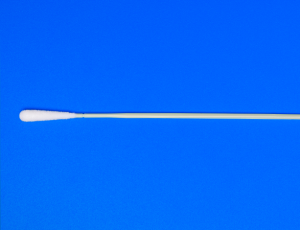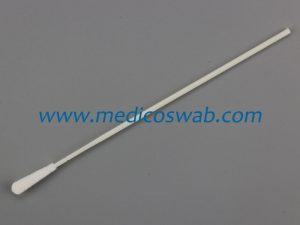Im Februar 5, 2020, Das Generalbüro der Nationalen Gesundheitskommission hat offiziell die Bekanntmachung zum Drucken und Verteilen des Diagnose- und Behandlungsplans für Lungenentzündungsinfektionen beim neuartigen Coronavirus herausgegeben (Versuch 5), Darin wurde erwähnt, dass in Nasopharynxabstrichen neuartige Coronavirus-Nukleinsäuren nachgewiesen werden können, Sputum, Sekretion der unteren Atemwege, Blut, Kot und andere Proben. So how to sample nasal swab or oral swab correctly?
1. Probenahmemethode für Rachenabstriche: The accuracy of throat swab detection is relatively high. This detection method mainly detects the bacteria in the throat of patients. If the test result is positive, it means that they are infected with virus. When the human body is in a healthy condition, there are many normal oral flora in the throat, which will not contain pathogenic bacteria. If the immunity of the human body declines, the pathogenic bacteria will lead to human infection. Zu diesem Zeitpunkt, collecting the bacteria in the throat of the patient can determine the health status of the patient. Natürlich, there may be false negatives, which are mainly caused by fewer bacteria in the oral cavity at the early stage of infection, or because pathogenic bacteria have invaded the lower respiratory tract. In order to ensure the accuracy of detection, blood tests can be taken.(empfohlen)

(1) um Patienten dabei zu helfen, eine angemessene Haltung einzunehmen, mit Wasser spülen; (2) Bitten Sie den Patienten, den Kopf leicht zu neigen, öffne seinen Mund und mache ein „Ah“ Klang, und wischen Sie schnell die beiden Gaumenbögen ab, Rachen und Mandeln; (3) Tauchen Sie den Wattestäbchenkopf in die Probenlösung, Kontaktieren Sie die Rohrwand mehrmals, um möglichst viele Proben in der Probenahmelösung zu behalten, Entsorgen Sie das Wattestäbchen, Den Schwanz festklemmen, und schließen Sie den Stecker.

 DNA Extraction Buccal Flocked Swabs
DNA Extraction Buccal Flocked Swabs

2. Sampling method of nasal swab:
(1) fully soak the swab in the sampling liquid, lift the swab away from the liquid surface, and repeatedly squeeze it on the pipe wall several times; (2) Lassen Sie den Kopf des Patienten auf natürliche Weise entspannen, slowly rotate the swab against the nostril wall, make it enter the patient’s first nostril to the nose and palate, and then take it out slowly while wiping and rotating. Wipe the other nostril with the same swab in the same way; (3) Put the nose swab into the sampling tube where the throat swab has been collected, contact the head of the swab with the tube wall several times to keep as many samples as possible in the sampling solution, discard the swab, pinch the tail and tighten the plug.



















